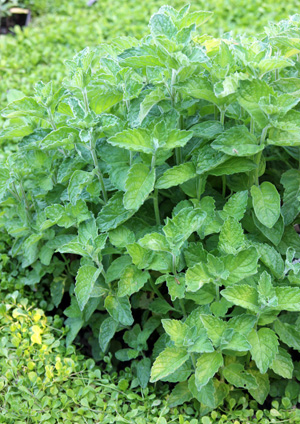
The genus Mentha is a large group of plants in the mint family (Lamiaceae). Mentha sauveolens (=M. rotundifolia, M. macrostachya and M. insularis), apple or wooly mint, is an herbaceous perennial native to southern and western Europe and the western Mediterranean that is commonly grown as a culinary herb. The variety ‘Variagata’ looks quite different from the species and goes by a different common name of pineapple mint.
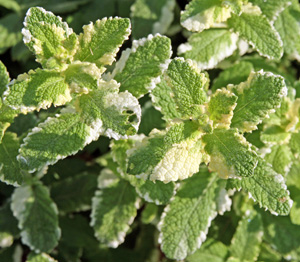
As the name ‘Variagata” suggests, the leaves of this cultivar are variegated with creamy white instead of the solid green of the species. Pineapple mint is edible, so can be used to flavor tea, jelly or fruit salads, or as a colorful garnish. The leaves are also added to light, fruity potpourri and is has been used for medicinal purposes. Although it can be used as a culinary herb, this variety is frequently grown just as an ornamental. It is hardy in zones 5-9, and zone 4 with protection.
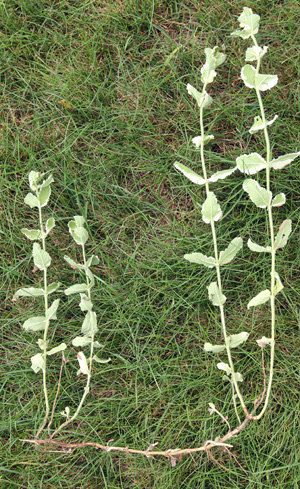
Like most mints, pineapple mint is a creeping plant that spreads from shallow underground rhizomes. Clumps grow 2 to 3 feet tall, and unlimited in width. The aromatic, opposite leaves are oval to oblong, 1-2 inches long and ¾ – 1.5 inches wide with toothed or serrated margins. They are sesslie (have no petioles).
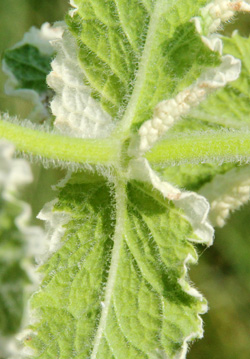
The soft, furry leaves are crinkled and have hairs on both upper and lower surfaces, with downy undersides. Supposedly the leaves have a pineapple fragrance, although is not particularly strong and is more just somewhat sweet and fruity. The foliage tends to remain dense right to the ground, not dropping its lower leaves like many other mints, so positioning to hide bare stems with other plants is not a concern.
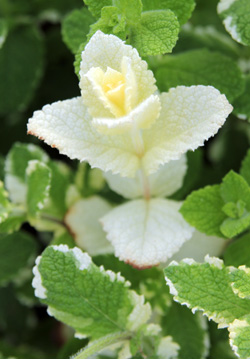
Pineapple mint typically has pale green leaves margined with cream. The cream and green variegation is quite variable, however, ranging from all-white to solid green and everything in between. All white stems do not have any chlorophyll to produce energy, and are susceptible to sunburn, so these stems tend to die out. The all-green-leaved stems are more vigorous than the variegated ones, so they should be cut out to prevent them from taking over, leaving you with apple mint instead.
Tubular white, pink, or pale purple flowers are produced in dense columnar spikes of whorls (verticillasters) in summer. These are attractive to butterflies and beneficial insects. Inconspicuous nutlets are produced after the flowers are pollinated.

Pineapple mint makes a good groundcover and is useful as an accent plant at the front of a border or bed. Of course it could be included in the herb garden as well. Combine this plant of medium texture with fine or coarse textured plants with solid-colored leaves for maximum contrast. Although the shallow rhizomes are easy to pull, this plant can be fairly aggressive in spreading, so plant in containers to prevent it from becoming invasive if you can’t assure it will remain confined. It makes a good addition to mixed containers,
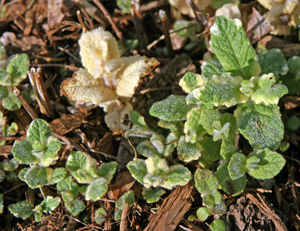
Pineapple mint does best in full sun in cool climates (but needs some shade in hotter climates or the leaves will burn; in mild climates it will sprawl and flop over in too much shade), and tolerates all types of moist soil. It needs consistent moisture to look its best but becomes floppy in rich soils or when fertilized much, so is good planted in lean soil. Removing old, woody plants to allow new stems to fill in will keep it looking its best. Cut the foliage back to the ground at the end of the season. It is easy to propagate at any time during the growing season from rhizomes but can also be increased by rooting stem cuttings in water or moist rooting medium. This plant has few pests and is not bothered by rabbits or deer.
– Susan Mahr, University of Wisconsin – Madison
Latest from Wisconsin Yard & Garden
Ask Your Gardening Question
If you’re unable to find the information you need, please submit your gardening question here:





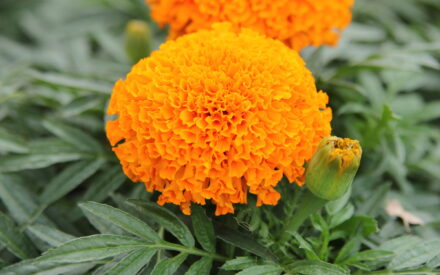 Marigolds
Marigolds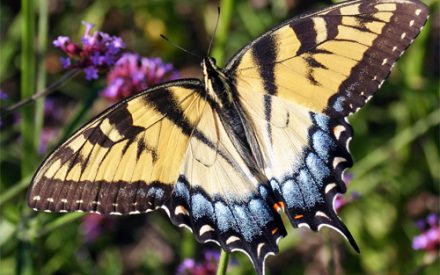 Create a Butterfly Garden
Create a Butterfly Garden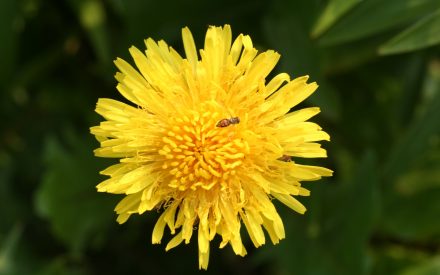 Plant Flowers to Encourage Beneficial Insects
Plant Flowers to Encourage Beneficial Insects Forcing Bulbs
Forcing Bulbs


